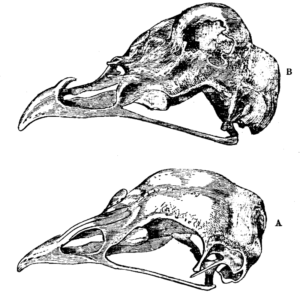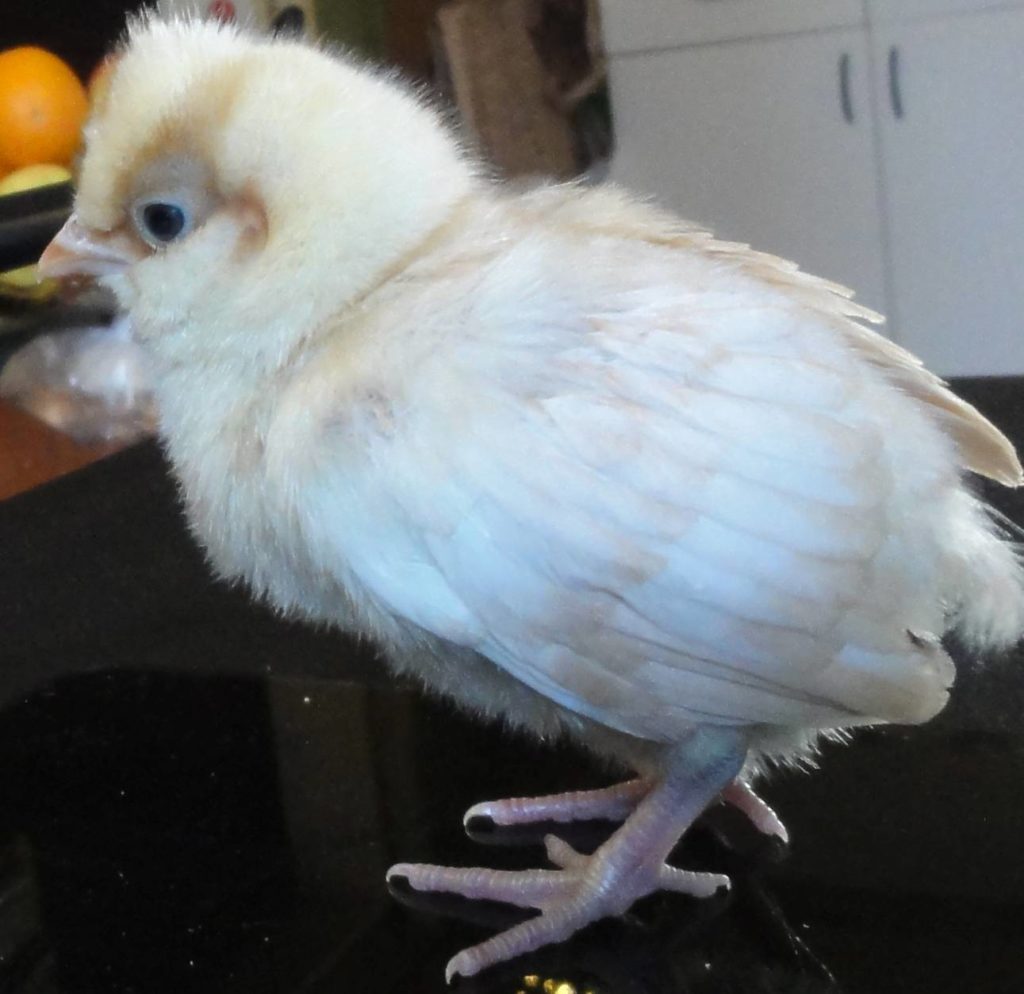The Paduan or Padovana chicken is a European crested bird that’s been around since the early Middle Ages.
HISTORY
We know, from archaeological evidence, that crested breeds were wide-spread in Europe and Russia. A chicken skull excavated in Gloucestershire, England dates to the 4th century CE and shows the typical cerebral hernia found in crested breeds.
 Skull with cerebral herniation. Illustration from The Variation of Animals and Plants under Domestication, vol 1, by Charles Darwin. A – wild Gallus bankiva. B – white-crested polish cock
Skull with cerebral herniation. Illustration from The Variation of Animals and Plants under Domestication, vol 1, by Charles Darwin. A – wild Gallus bankiva. B – white-crested polish cockThe Paduan (Gallus gallus domesticus) is probably related to the Polish and Dutch crested birds and the Dutch bearded, crested breeds who probably originated in the Netherlands. The story goes that the Padovana crested bird was brought from Poland to Italy by Giovanni Dondi Dell’Orologio in the 1300s, even though there isn’t any documentation to show that Giovanni ever went to Poland.
Today, the Paduan is an endangered breed. A 2007 study showed that there were approximately 1200 birds world-wide, only 300 of which were cocks.
CHARACTERISTICS
Primary Use: Ornamental
Temperament: Skittish
Size: Medium-light
Egg production annually: 120-150
Egg Color: cream to light brown
Average Weight: Male – 5 lb/2 kg, Female – 3.8 lb/2 kg.
PHYSICAL FEATURES
Paduans are small- to medium- sized, slender bodied bird with up-right carriage and tail. They do not have combs and often only vestigial wattles with small, whitish earlobes.
They are best known for their crested look. Paduan skulls have a bony prominence on the top front and tufted feathers grow on top of that, giving them the appearance of wearing a feathered hat that flops down over their eyes. They also sport chin feathers that make-up their “beard”.
Feathering varies, but the most common colors are white, black, gold, silver and chamois. Both sexes have the same type of plumage, though males can be darker.
 Sharp, rounded beaks make them good foragers, especially for bugs.
Sharp, rounded beaks make them good foragers, especially for bugs.As meat birds, they are lean with pinkish-white flesh and a delicate flavor. In Italy, they are slaughtered around 5 to 6 months and often made into light stews or soups, known as wet preparations or “tocio”.
BROODINESS
The hens are not inclined toward broodiness and poor hatch rates. If you are interested in raising this breed, you will have better success using an incubator and brooding pen, or broody hen of another breed.
HEALTH AND SAFETY
They do not tend to forage widely, so are useful for keeping in smaller pens or coops. Crested birds struggle in rainy or very humid atmospheres; their feathers cover their eyes, nose, and mouth making it difficult for them to forage, breathe and eat. Paduans also have a wide nasal cavity, which puts them as some risk of disease or pests.






